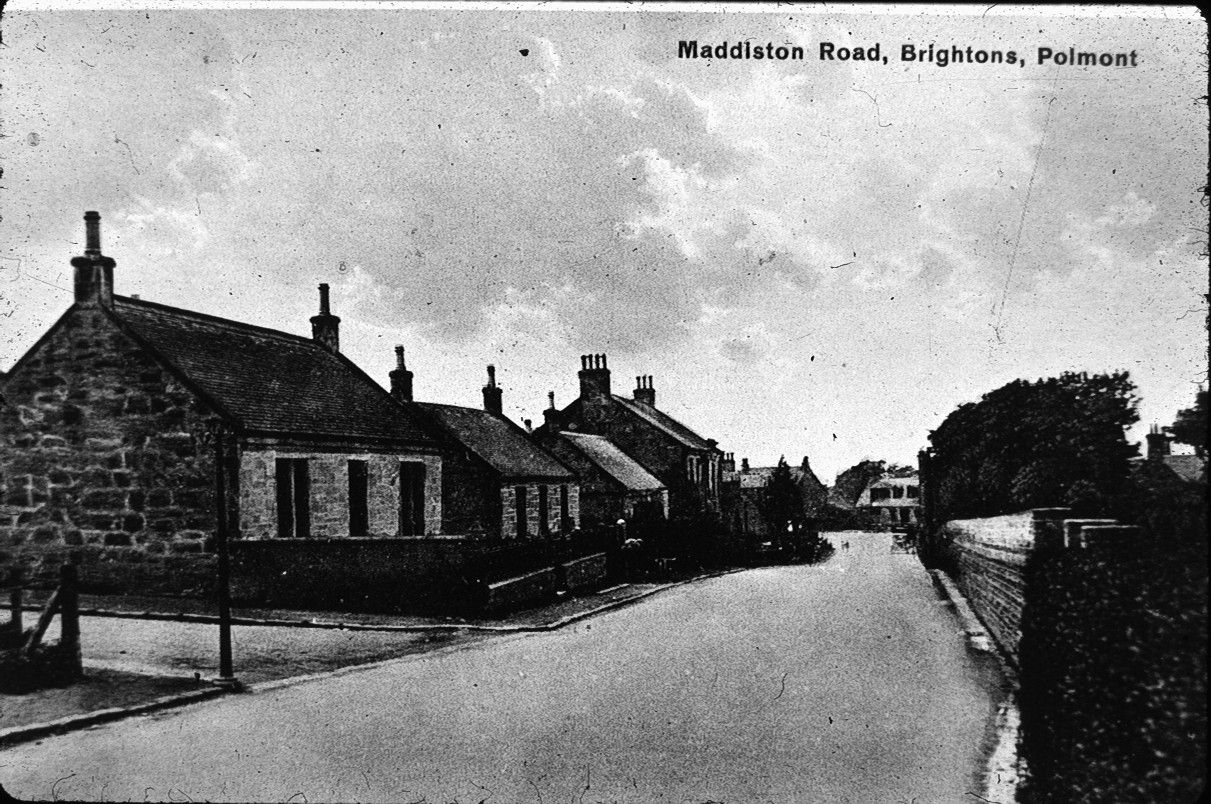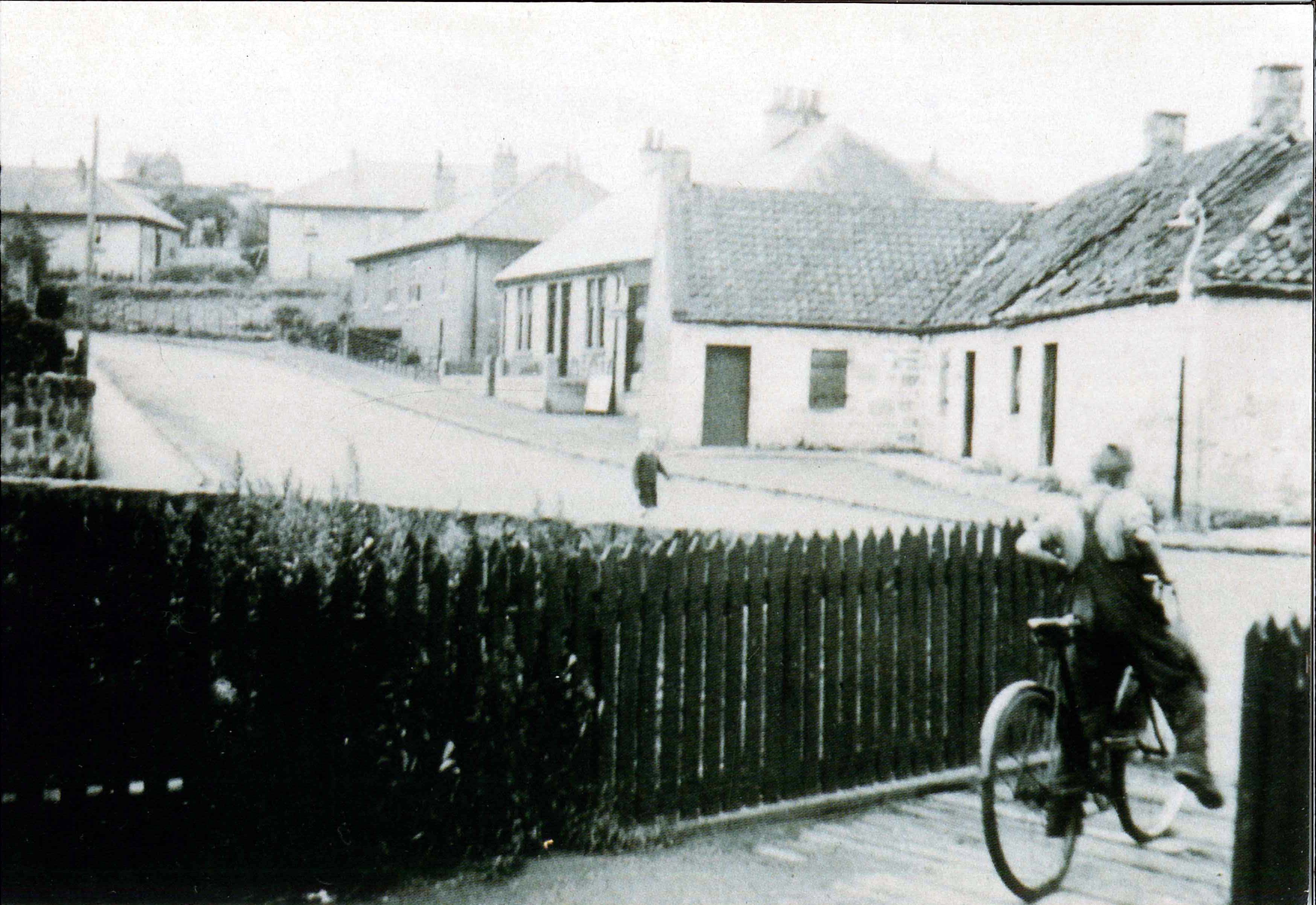Two of these three Maddiston gems don’t exist as such anymore, and the other one brings back memories and contains hidden treasures.
Cairneymount Church
In 1902, John G. Urquart of Vellore bequeathed £2000 and a parcel of land (part of which was occupied by a small row of houses called Cairneymount) to the Heritors of Muiravonside Parish, for the building of a church on the hill above Maddiston (Maddiston and Rumford History Group; Muiravonside Parish Church of Scotland History). Urquart felt that Muiravonside Kirk was too far for the people of Maddiston to travel to and the new church was finished in 1904 (Maddiston and Rumford History Group). The architect was Mr. J.D. Strang of Falkirk (Muiravonside Parish Church of Scotland History).
The Rev. John Mc Murtie D. D., Moderator of the General Assembly, laid a memorial stone. Several items were placed in the cavity behind the stone: some coins of the realm, a record of the bequest and the building of the church, copies of the Scotsman, Falkirk Herald, Peoples Journal and the magazine Life and Work for July 1904 (Maddiston and Rumford History Group).
Cairneymount was a busy church in the 1930s, the evening service was held there every Sunday at six o'clock, and Jim Bryce rang the bell which called the people to worship. The Sunday school was held here between three and four o'clock. On the day before the school holidays the children came up the hill for the school service. In 1973 the church was much altered and became a church hall as well as a church. In 1980 a small hall and toilets were added at the back (Maddiston and Rumford History Group).
There was at least one house here on the hill before the church was built, but we don't know whether it was demolished to make way for the church or not. We do know that one of the men who died in the Brickworks explosion at Manuelrigg lived at Cairneymount. It is possible that the houses were either not lived in any more or pulled down at an earlier date. The church and grounds have been sold and the church was converted in the 2010s into flats.
Many of us in the Maddiston and Rumford History Group remember how he would only drive along to the shop at the corner of the High Road, turn around and go back to Toravon again – he had a chauffeur, Mark Chun, to do the driving though!
fields['text']) echo $section->fields['text']; ?>
Toravon house
Major Salveson owned Toravon, he retired here after World War I. He was born at Polmont House, educated at Blairlodge School (now Polmont Young Offenders Institution), and served with the Royal Engineers in South Africa, and afterwards in India. He was the first man in the village to own a motorcar (registration No's M S 1 & M S 2). Many of us in the Maddiston and Rumford History Group remember how he would only drive along to the shop at the corner of the High Road, turn around and go back to Toravon again – he had a chauffeur, Mark Chun, to do the driving though!
In the winter when the children were sledging down the hill (where Cairneymount Avenue is now built), Salveson would come along with oranges, apples and sandwiches for them. Toravon house has long gone – it was demolished after a fire ruined the interior and the roof. A new Toravon has been built (not on the site of the original) and a new scheme of houses was built in Toravon Woods, which at one time was laid out in paths for walking round with ornamental ponds and bridges (Maddiston and Rumford History Group).
Templars Hall
When we think of the Brethern in Maddiston and one name springs to mind - James Black. Jimmy, who hailed from Airdrie, came to Maddiston to work at Manualrigg Colliery as an office boy and then became a miner there until the colliery closed in the 1920s. He then became the Absentee Officer for Muiravonside School Board. Jimmy preached the gospel for so many years in the hall down the Coal Road that the hall became known as “Jimmy Blacks' Hall.” He was also a tireless worker on behalf of Polmont Borstal and received the British Empire Medal for his services to that place. Davie Anderson was the Sunday school superintendent.
Meetings were also held throughout the villages, many remember the men in black suits, bowler hats and umbrellas (Gods work won't wait for the sun to shine). Among other functions held the Rechabites Hall, or the Church Hall (it was known as both), there was the Child Welfare Clinic and the Buroo, and dances. Film and Magic Lantern shows were on the first Tuesday of the month and cost 1d. The Maddiston Players used the hall as a theatre as well – it basically held the position of Village Hall!
By David Leask of David Leask’s Maddiston Pages. With further research conducted by Rowan Berry for Falkirk Community Trust Great Place Scheme.

